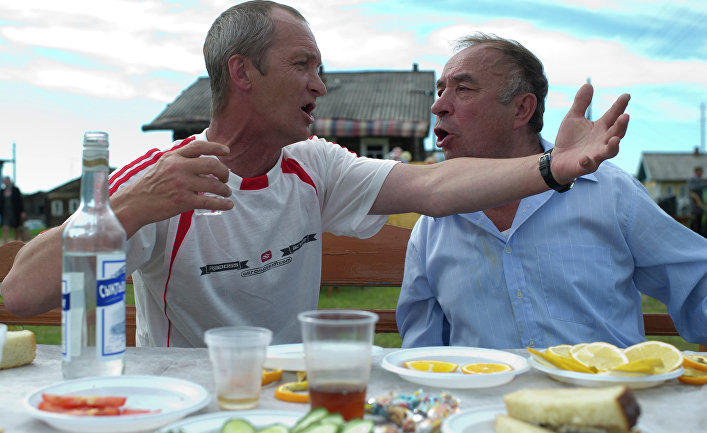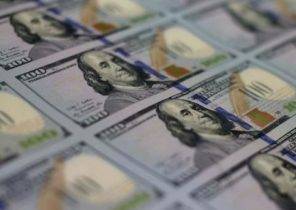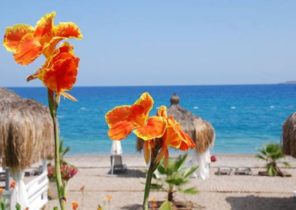
Alcohol kills, harms and causes headache. Why is the history of mankind, however, is filled with drunkenness?
“For three days, continued until the wedding, guests drank without stopping. All the time twenty or thirty people drank and drank, and finally drunk, slept a couple of hours, with new forces began to drink again.”
If you think that drunkenness is a modern invention, you’re wrong. The foregoing description, according to Ragnar Hauge (Hauge Ragnar), a former employee of the State Institute for the study of alcoholic beverages (SIRUS) and the University of Oslo, refers to Denmark of the sixteenth century.
And drunk this wedding was hardly an exception.
Here in Norway the Church demanded that the married couple came to the altar to 11 hours. Because if a Church service was postponed until 12 o’clock or one o’clock, the entire congregation at this time was already insane. Often alcoholic swill you can buy directly from the house of a priest.
Historical sources tell about the staggering consumption of alcohol — as in the middle ages and in subsequent centuries.
Beer, which is 7 thousand years
Drinking was not something new already.
Written sources of ancient times describe how drunk you get depends on how many bowls of wine you drank. A pair of bowls makes you a noble fun. After ten you are in the last painful stages of intoxication.
There are archaeological traces of even more ancient periods, showing, for example, that people brewed beer for 7 thousand years ago.
And this is understandable, assuming that to be drunk fun.
But why we perceive it that way?
From the point of view of the evolution of our tendency to drink is unclear.
Because, no matter how it was fun, it is impossible not to admit that alcohol is dangerous. If you need to escape from a lion or fighting with an opponent, don’t be smashed drunk. Or sick with a hangover.
A good illustration is a squirrel ate too many fermented fruits (video in the original text of the article — approx. ed.).
Even for people of our time drinking is very bad.
This confirms, for example, a large study in Russia, where alcohol consumption is particularly high. The results show that more than half of deaths among people aged 15 to 54 years are the result of drunkenness.
On the basis of the danger that brings drunkenness, we should develop an aversion to alcohol. Why, however, do we love him?
Studies give several explanations.
Forbidden fruit
A few years ago, Berkeley Professor Robert Dudley (Robert Dudley) put forward the hypothesis of the so-called drunken monkey — or in English, drunken monkey hypothesis.
The Professor argues that current alcoholism is a kind of evolutionary hangover. The logic is the following:
Alcohol, or rather ethanol, exist in nature. But mostly only where the fungi of fermentation breaks down the sugars in overripe fruits. Sweet and ripe fruits are a very valuable source of calories.
If you drink alcohol, then it is likely to get a lot of calories. Fruit flies knew that a long time ago.
Our ancestors, too — according to Dudley, who believes that they have developed the ability to smell the odor of alcohol.
Ethanol is a very volatile compound that easily spreads from fermented fruit. This contributed to the fact that our lovers in alcohol ancestors got food saturated with sugar.
Weak intoxication, which they had to obtain from fermented fruit, could even strengthen the appetite, with the result that they received more calories. Another interesting feature in the struggle for existence!
And, in addition, alcohol itself gives a lot of calories.
Because the alcohol content of naturally fermented fruit is very small, good love of alcohol was greater than the harm, says Dudley.
Effective the enzyme was obtained 10 million years ago
“The hypothesis has not yet received sufficient empirical support,” said gine Roll Cherveux (Gine Roll Skjærvø), the biologist of the evolution of Technical and natural science University of Trondheim (NTNU).
But there are scientific papers which confirm that Dudley’s got a point.
In 2015, there was an American study, which showed that our ancestors were able to improve the ability to digest alcohol about 10 million years ago, before man, chimpanzee and gorilla separated from each other.
Already 70 million years ago primates have created enzymes to break down alcohol, which means they from time to time drank alcohol. But 10 million years ago a mutation occurred that made the process more efficient, says Cherveux.
“It happened at the same time climate change and the fact that our ancestors began to live on earth. Probably where they found more fermented fruit and their advantage was the ability to more effectively break down alcohol. This supports the hypothesis Dudley. This efficiency of our enzyme, that means that alcohol was an important resource.”
Drunken monkey
In 2013, another research work has shown that in monkeys appeared to bonthe higher ability to resist viruses, if they drank a little alcohol.
Human studies have also shown that alcohol in limited quantities may be favorable to us.
“This is typical of small concentrations, that can be found in fermented fruit,” says Cherveux.
In addition, there is the actual observation of wild monkeys, showing that these animals drink alcohol, if they have access to it.
In West Africa scientists for many years studied, for example, a group of wild chimpanzees. These monkeys steal fermented palm juice containers to collect it, fixed the people in the trees.
And on the Caribbean island of St. Kitts monkeys drink too. They learned to steal tourists drinks, both alcoholic and non-alcoholic.
Scientific studies have shown that the manner of drinking in monkeys are strikingly similar to ours: while some refrain from that, most likes a little drink in the company in the second half of the day. Some drink a lot, but well deal with it, while some become alcoholics. According to The Guardian, they drink as long as out of control drunk, and often drunk as a skunk.
Insufficiently developed to handle a large number
According to Dudley, we are also adapted to living with alcohol. But in small quantities.
When people discovered that they can make liters of alcohol, the trouble began — not least after some found out how to make concentrated alcohol. Better known as alcohol.
The current dangerous drinking and terrible cases of alcoholism are explained by a kind of evolutionary hangover, says Dudley.
Our development is such that we come to another life, and not one that we have. We are unable to develop the ability to overcome the dangers that can result from the availability of drinking large quantities of strong alcohol.
What functioned so well, when we started, has now become our headache. In the literal sense.
This hypothesis is not devoid of weaknesses.
If alcohol is so attractive to us, why we don’t drink it all the time, even though we currently have such opportunity? Why not all people are alcoholics?
Zoologist Petter Beckman (Petter Bøckman) Natural history Museum of Oslo believes that part of humanity was another period of evolution that made us able to cope better with our everyday life, full of the smell of alcohol.
Wild drunkenness in Europe
The history of Europe, as already mentioned, laced with alcohol.
When about 10 thousand years ago the people here were farmers, they were able to grow wheat and other plants, from which they could brew beer and make wine. We do not know how our ancestors cooked and drank in the first Millennium.
But closer to our time appear in historical sources that tell about the strong consumption in the period, for example, in the middle ages and subsequent periods.
People consumed beer or wine in order to quench one’s thirst or as an alcoholic beverage. Sometimes it crossed all boundaries. As for the infamous Gin Craze period (a period of great consumption of gin) in London in the early 18th century. New policy calling for the production of gin, led to non-stop drunkenness on the streets.
Something similar happened in Norway in the early 19th century, when the authorities lifted the ban on the production of alcoholic beverages.
Alcohol consumption has increased, apparently, in five times, approximately seven liters per capita per year, Hauge wrote the article in 1996. He quotes an old post: “It was a “morning Cup” Breakfast, “delicious soup” for lunch, a drink in the interval and “nightcap” with dinner. In addition, many put the bottle beside the bed to take a SIP or two.”
Children sober
“During the last centuries in Europe was unimaginable binges,” says Beckman. In the 15th century people got drunk from the age of 16 and continued until his death. As a result, many died or drank away everything they had. And they could not have children.
“The present Europeans are the descendants of those who were able to control alcohol consumption,” says Beckman.
Cherveux from the Technical and natural science University of Trondheim considers that such a course of development quite possible.
Professor Leif Edward Ottesen Kennair (Leif Edward Ottesen Kennair), the psychologist of evolution, University of Trondheim, believes that we must draw conclusions cautiously.
“Intoxication in humans is a complex thing, a mixture of our biology and culture. And several hundred years — a very short time for evolution. In this case, press our development must be very strong. If so, then we should see a genetic difference between groups of people who consumed a lot of alcohol and those who did not do it”.
Asian defense
A number of studies shows that such differences exist.
The population of East Asia, which has an equally long history of farming and alcohol as the Europeans have, for example, a particular gene for the digestion of ethanol.
This gene contributes to the fact that alcohol is split otherwise in the body. This is the reason the so-called asian flush — an unpleasant phenomenon that plagues many Asians. One or two drinks cause symptoms such as redness, rapid heartbeat, educlevel and headache.
This variant of the gene naturally prevents excessive consumption of alcohol. Scientific work 2010 shows that this gene appeared at a time when Asians began to cultivate rice and probably got better access to alcohol.
We have the required documentation for special protective genes of Europeans.
But maybe we can find especially unhappy genes in groups, which is not such a long period of development?
Uncertainty with indigenous peoples
It is known, for example, that of US Indians who have not had access to alcohol before the Europeans arrived, there were large problems with alcohol.
The scientists looked for a genetic explanation for this phenomenon.
Some scientific research has indicated that American Indians and white Americans digest alcohol differently. But others contain insights that differences do not exist.
In 2013 summed up the results of the research in this area. In the conclusions it was stated that there appears to be many genes with properties that affect the risk of alcoholism, ranging from body mass index, ability to withstand alcohol and to personal characteristics.
But none of them were typical of the indigenous population of the United States.
Yet, according to the study, there is nothing to indicate that the Indians of abnormal splitting of alcohol in the body compared to other groups of people.
Conversely, it is well known that many social and cultural factors affect the risk of alcoholic problems.
This is confirmed by historical attempts to solve the problems arising from the large consumption of alcohol.
Restricted access
Certain restrictions in access to alcohol, in all probability, help.
Strong alcoholism in Norway declined in the early 19th century, with the creation of temperance societies and the introduction of taxes and restrictions on the sale of alcoholic beverages, says Hauge.
A recent study in Russia also indicate that the availability can exert a strong influence.
The number of deaths related to alcohol in the country, much has changed in the last decade. The unusually high figure of 25% has decreased after 1985, when Mikhail Gorbachev introduced restrictions on the sale of alcohol and heavy fines for drinking in public places.
But after the fall of communism, alcohol consumption and deaths rose again. And in 2014 after the new alcohol reform 2006 — studies have shown that consumption of vodka and the risk of mortality started to decline again.
So, you can probably assume that the solution is a complete ban. The US and several European countries in the early 20th century tried to do it, but then nothing happened. Common to all restrictive projects is that they fail.
So, drunken monkey is not so easy to stop.







